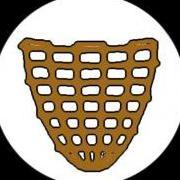-
Posts
679 -
Joined
-
Last visited
About jevans
- Birthday 09/15/1941
Contact Methods
-
Website URL
http://
Profile Information
-
Gender
Male
-
Location
Tyneside, UK
-
Interests
Retired Power Systems consultant.
Golf, gardening, walking and of course photography
Recent Profile Visitors
3,646 profile views
jevans's Achievements

Advanced Member (5/6)
-
I very seldom make an MP4 file. However I recently converted an existing project to MP4 format. The PTE project was constructed in 1920 x 1080 format and published as an HV video file in H.264 format, using the settings, 1920 x 1080, high quality, 30p frames and pan scan disabled. The video file was created successfully, but when played back, the visible area of the images were reduced so that some portion of the images were lost. Then I remembered about the "Show Safe TV Zone" check box and , ticking this, could see the amount of image lost. My question is this. Now that we have the ability to create projects in 1920 x 1080 format which is the same as many screens, is the "Show Safe TV Zone" not redundant? Also why when originally in a 1920 x 1080 format and published in the same format, do I lose some of the image area?
-
Igor, Cannot check for all the issues you have corrected but the installation window appears very quickly (no appreciable delay). Video files appear the same as in previous version.No other problems seen so far. I have had several incidents of PTE crashing recently with V9.13. It appears to be random and I cannot repeat any incident. But I have not had this before. Will keep a check and let you know if I can identify any repeatable incident. Jeff
-

Problems with (1 )timeline (2) image size [SOLVED]
jevans replied to pbear-1's topic in General Discussion
Firstly, if all the slides are manually advanced, do not worry about the timeline. Just look at the slide list and forget about times. Secondly, open each slide in the O&A editor. Add your caption and place it where you want. Adjust the slide size so that there is romm for the caption and resize the text if necessary. Once you have done one slide, it might be a good idea to copy this and then change the text and slide name so that all your slides are the same. -
Dave, I have updated to Lightroom Classic and Photoshop CC 2018. I have no interest in the cloud based version Lightroom CC. As I understand it, the cloud based version is compatible with IOs, Android and Windows devices so that it is virtually device independent, hence storing files in the Cloud. No idea why I would want to edit imsges on a tablet but presumably there is a demand for this. All my files are on external usb drives these days and, like you, I take my laptop and drives with me when I travel. Both LR Classic and PS CC seem faster eith the new versions. Jeff
-
Nice style Dave. You are right, this style does not suit all types of images.
-
Hi Barry, I have the same computer setup as yours, Windows 7 PTE 9.0.11. I have no problem with adding additional text. I added three lines of text and can click in the text edit window at any point within the existing text and add new letters. The cursor does not move.
-
Denis, This has already been reported to Igor.
-
Very interesting idea. I am sure there will be a military museum somewhere which would be most interested to have a copy.
-
Hi Barry, All you need is two mirrors and really long arms! But seriously, I am amazed how good your commentary is in your tutorials if you record directly into the computer or at least record in the same room. My computer is much too noisy and the room environment is not very suitable : too many hard surfaces. However it was an interesting idea to use a mobile phone and I gave it a try with surprisingly good results. I attach two mp3 files. Voice 002.mp3 was recorded from a Samsung Mobile Phone and STE-026.mp3 was recorded from my Zoom H2 portable recorder which I have used for all my recent recordings. The interesting thing is that the Zoom H2, being much more sensitive, has a much higher background noise than the phone and I normally have to remove this. The phone has little background noise, but has a slightly tinny or echo tone which is a little metallic. The phone produces .m4a files, (whatever these are) and I had to convert them to mp3 or wav files before I could use them. Re your query about microphones, I usedd to use a Sony ECM-MS907 microphone (which was quite expensive), with A Sony disc recorder, but found this rather cumbersome. So I changed to using the mic with a pre-amp and feeding the output directly into the computer. This did not give marvelous results so I bought the Zoom H2. One thing I should state is that I have hearing aids which I wear all the time now. This drastically reduces your ability to detect the difference between high quality audio and lower quality sounds. So I cannot tell the difference between high quality and reduced quality sound these days, although I know my audience might well do so. Jeff STE-026.mp3 Voice 002.mp3
-

Sand Soda and Limestone - Glass
jevans replied to Barry Beckham's topic in Tutorials & Video Lessons
Thanks Barry. Really good idea for those wet or bad light days. Must give it a try. -
Just to let everyone know that the Online Help File is now up to date and the revisions are complete. There may be some additional "How To's" for Version 9 which will be added when appropriate. If anyone finds any errors or want something added, just post a comment here. Regards Jeff Evans
-
I use a Zoom H2 hand held recorder (now about £100 in the UK). Provided you put it on its stand and record in a suitably quiet location (bedroom, with curtains drawn, and a rug or cloth on top of the chest of drawers), I do not need any noise reduction. I have tried various techniques with good quality mics, but you need a preamp or amplifier and still need some storage solution. Recording directly into the computer is definately a no-no. The Zoom has SD card storage so you can remove it and transfer directly to the computer. Jeff
-
jt49, It is a fact that, for parameters Pan Zoom, Rotate, Opacity and Blur, the original values of the parameter at KF1 are always inherited when a new KF, (e.g. KF2) is inserted, whether the parameter box is ticked or not. Once ticked, the inherited value becomes visible and can be changed or left unaltered. If a change is required in the parameter value at KF2, the parameter "tick" box must be ticked and new values applied. This ALSO applies to Color Correct parameters. Any initial values applied to KF1, will be inherited, if KF2 is inserted. The difference is that when the parameter box is ticked, all color values revert to their default values. In my opinion, whether this is the correct behaviour is less important than making sure that the difference between color correction actions and the other adjustment parameters are understood. I accept that this behaviour is the intended one according to Igor. Whether it is a desirable one is another matter. But classing color correction as a "modifier" does not seem to me to be correct because modifiers can only be applied to an initial KF to alter the behavior between this KF and the next. So whether the new KF inherits the value of the preceding KF, is irrelevant. But is that important? The most important issue is to ensure that the user understands how the various parameter controls work and are applied. Jeff
-
(Barry has posted a revised version over the original) Hi Barry, I like this revised version much better. In fact this is much more like a "Barry Beckham" show of the kind which I have admired so much. The addition of different images keeps the interest going and the slightly shorten version suits the story much better. I also like the fact that you have removed some of the pans : I think panning has to be used with a lot of care and have a definite purpose. You certainly have some superb images here. Thanks for the revised version. Jeff
-
Jill, I have tried this on several slides without any problems. The text box just expands as it always has. Windows 7 Professional. Jeff




